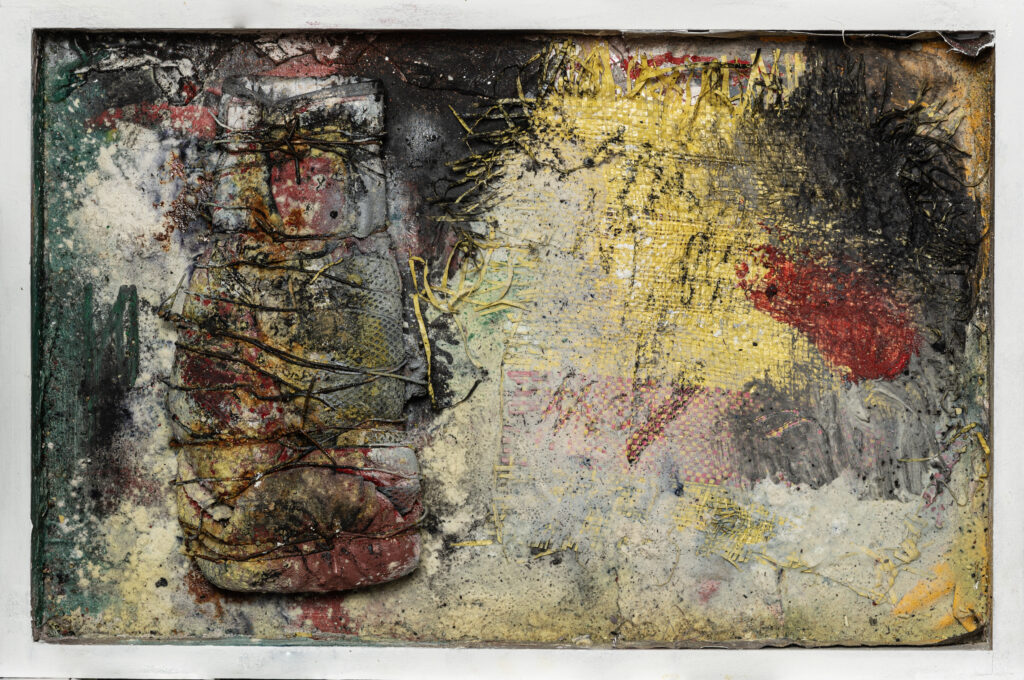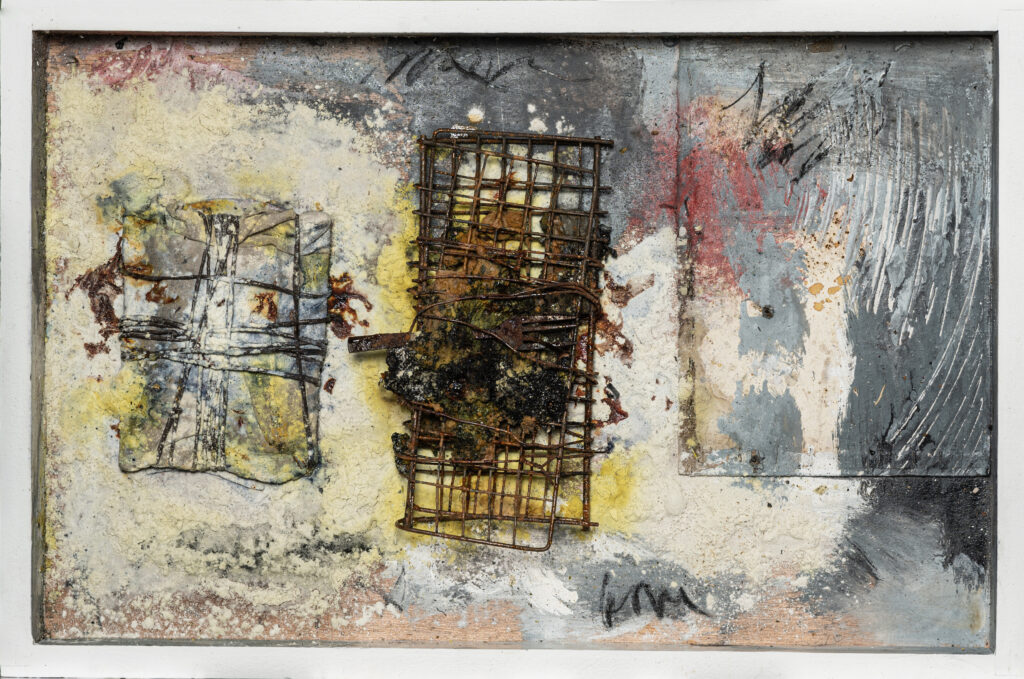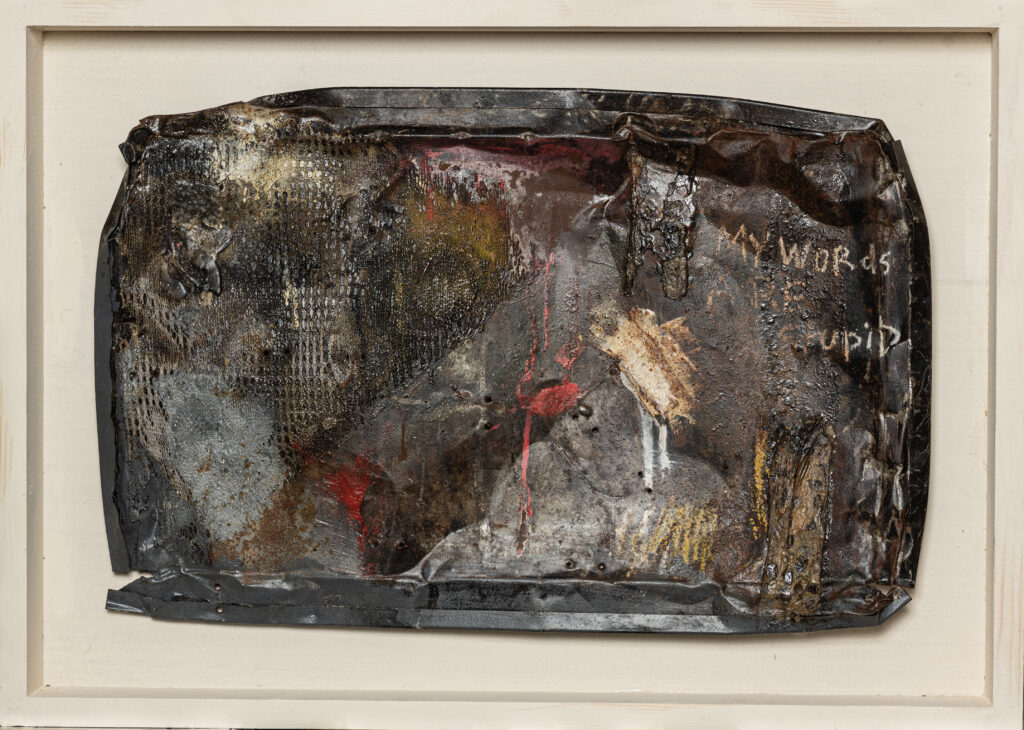The Radical Aesthetics of Decay: Inside Abdellah Idsidibella’s Vision
In the ever-shifting landscape of contemporary art, few artists dare to embrace destruction as deeply and instinctively as Abdellah Idsidibella. A visual artist, painter, installation artist, and conceptual photographer from Ida ou Gougmar, Tiznit, Idsidibella approaches art not as decoration, but as a radical act — a disruption of comfort, a raw encounter with collapse, and a provocation to confront what most would rather discard. For him, beauty is not a static measure or an inherited canon; it is a volatile force, born out of decay, combustion, and the relentless cycle of destruction and renewal.
“I do not see beauty as a fixed value, but as a fluid state born out of chaos, decay, and reconstruction,” Idsidibella explains. This conviction animates his artistic practice, where burnt and consumed materials become living artifacts, telling stories of disintegration and rebirth. Each piece emerges like a phoenix from ashes — scarred, chaotic, yet impossibly alive.
Idsidibella’s work is inseparable from his childhood in the rugged mountains of Souss Massa Draa. Growing up in poverty, he and other children had to invent their own toys and objects from discarded materials: empty tuna cans became cars, scraps of fabric became dolls. That ingenuity, born of necessity, planted the seeds of a lifelong philosophy — that waste could be resurrected, and that decay itself could hold within it a creative force.
“When I returned to my past,” he reflects
“I began once again taking discarded materials and transforming them into art.” In his hands, trash becomes testimony. Brokenness becomes language. What the world rejects, he reclaims as sacred matter.
If his style could be distilled into a single word, Idsidibella offers one from Moroccan dialect: l’aafen (العفن). Translated loosely, it means “rot” — but in his art, rot is not just decay. It is the fertile ground where transformation takes root. It is the tension between pain and creation, memory and future, wound and healing.
His inspirations come from the margins of society: burnt trash, urine-stained walls, garbage piles fermenting in the sun. These are not glamorous muses, but they are profoundly honest ones. “These filthy places,” he says, “are where I find my deepest inspiration.”
In an art world often dominated by polished perfection, Idsidibella insists on rot as truth. His practice is not about beautifying the unappealing, but about insisting that the ugly has its own uncontainable form of beauty — one that cannot be sanitized or ignored.
Art as Wound, Art as Weapon
Much of Idsidibella’s most personal work centers on hunger, oppression, and poverty — themes rooted in his own experience of living in Dar Talib, a student boarding house. Separated from his village to attend school, he endured hunger, humiliation, and mistreatment at the hands of those who controlled the institution. These wounds became part of his palette, inscribed into his canvases and installations as silent screams.
He does not seek to soothe his audience. Quite the opposite: “I want to disturb people, not let them feel comfortable when they see my work,” he asserts. His art transmits the illness, unease, and chaos that he himself feels. It is confrontation, not escape.
This radical positioning makes Idsidibella’s work both urgent and timeless. In a world that often hides its rot beneath layers of denial and consumer gloss, he drags it to the surface — raw, unfiltered, and unrepentant.


Destruction as Creation
Underlying his philosophy is a paradox: destruction is not the end, but the beginning. In burning, breaking, and corroding materials, Idsidibella discovers a rebirth — a new visual language forged in ruins. Chaos is not only aesthetic; it is substance. Each artwork stages the tension between annihilation and resurrection, reminding us that collapse itself can be generative.
Here, Idsidibella stands within a lineage of artists who refuse beauty as an easy comfort. Like the Phoenix regenerating itself, his practice insists that fire, rot, and filth are not the death of form, but the birth of something truer, rawer, and more alive.
Check Out More Icons Around The World
